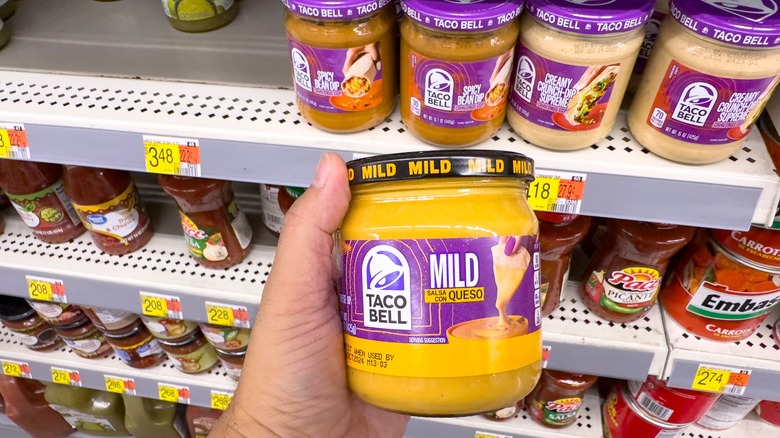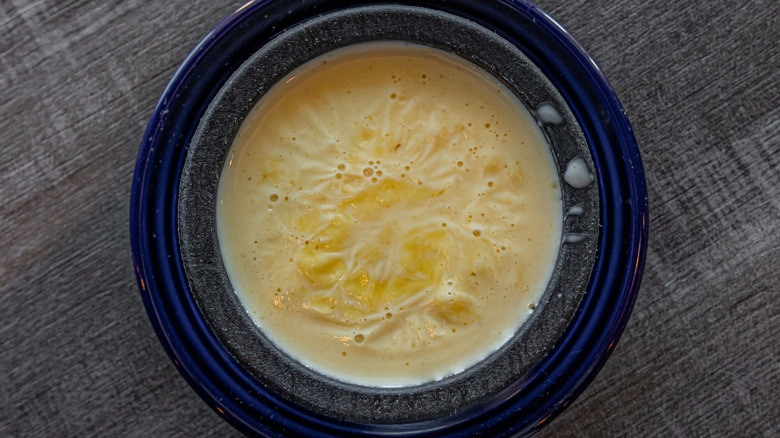How Long Is Store-Bought Queso Good For After Opening?
We may receive a commission on purchases made from links.
Chips and dip are a natural pair that can eat like a meal in some cases, and nothing complements a snack with crunch (try Bugles to mix it up!) like some store-bought queso. While you certainly could make your own, those thick little jars from the supermarket are just too convenient (and what's inside is too tasty) to pass up. But you might be wondering what kind of timeframe you have to work with once the jar is open — when is the queso best eaten by?
Store-bought queso is good for up to two weeks, as long as it is stored properly. The preservatives put in many of these jarred cheese dips give them a much longer window than the homemade kind (which should be eaten within four days). When not in use, open queso should always be kept in the fridge, and it should never be left out on the counter for longer than two hours, or else it enters what the USDA website calls the "danger zone." Unopened queso is shelf-stable and can be kept in the pantry for up to two months after the "best by" date on the packaging.
Usage and storage tips for store-bought queso
A few notes about using store-bought queso in order to make it last as long as possible: It's important that you don't dip things (chips, spoons, etc.) that were in your mouth into the queso, and don't pour queso that you have put in a separate dish, heated up, and eaten from, back into the main jar. While you might be the only one eating it, in both cases, you're nonetheless introducing bacteria from your mouth into the main portion of the cheese that can then accelerate its spoilage.
When storing your queso in the fridge, you should always make sure that the lid is on securely to avoid contamination from anything else that's in your refrigerator. If you don't have the lid, you can put a small sheet of plastic wrap over the top and secure it in place with a rubber band, or move the queso to a different container with an airtight lid.
When to say goodbye to your queso
Even if you've followed all the instructions outlined here, there is no holding back the cruel ravages of time. Once you start to near the end of your queso's natural life, there are some signs you should look out for that will indicate its time is up. If you open the jar and immediately get a scent that something is off, like there is something foul lurking in your cheese dip — it should smell rich and cheesy — you're probably better off tossing it out. Likewise, if the taste is slightly off, too.
You can also tell if your queso is going bad by how it appears. If it's good, it should be thick, creamy, and glossy; if it's on its last leg, there could be a lot of separation, it could get clumpy, or the color might start to darken. There is also the most serious sign that your queso should be dumped out: the appearance of mold. While it's true you can cut off the mold on some hard cheeses and still eat the rest, that is not the case for queso. Where there is mold on top, there are very likely spores all throughout.


